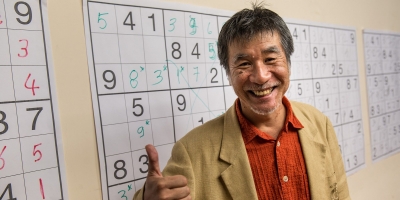
Sipping on a morning up of tea with a pencil in hand trying to solve the latest Sudoku published in the paper has become a routine for many. But do you know who invented this game or how it has evolved over the years?
Dubbed divided into Rubik’s cube of the 21st century, Sudoku consists of a grid of 81 squares, divided into nine blocks of nine squares each. Some of the squares already contain figures. The goal is to fill in the empty squares with numbers one to nine without any repetition.
Sudoku is a contraction of a Japanese phrase for “every number must be single”. However, contrary to popular beliefs, the game did not originate in the land of the rising sun.
How it originated
Experts are divided on the origin of Sudoku. An 18th Century Swiss mathematician Leonhard Euler is usually credited with devising a game from which the modern-day Sudoku has evolved. Euler’s game called Latin Squares was made up of a grid in which a number or symbol appears only once in each row or column. However, many believe that the game might have come from China and India All that we know is that early versions of this game began to be published in newspapers in France in 1895. In the 1970s, Howard Games, a freelance puzzle inventor, published it in Dell Pencil Puzzles and Wont Games magazine in New York in the US under the name Number Place. It became a regular feature, but its enthusiasts remained niche.
The Godfather of Sudoku
A few years later, in 1984, the grid-based game became a sensation in Japan thanks to Maki Kaji, the publisher of Nikoli magazine, who reinvented the game and gave it a new name Sudoku quickly caught on in Japan as an alternative to crosswords. The letters of the Japanese alphabet or kanji are not suited for crosswords.
The empty squares caught the attention of Wayne Gould on his visit to Tokyo in 1997. He published the puzzles in The Times of London and they spread like wildfire. Sudoku struck a chord with people around the world as it does not require extensive knowledge of English. Soon, the game began to appear in newspapers and magazines around the world.
Picture Credit : Google



